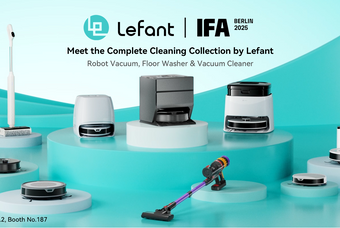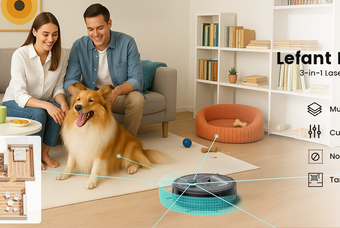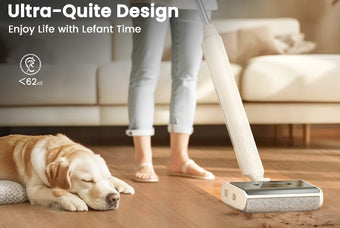How Household Dust Harms Your Health and How Robot Vacuum Cleaners Can Help

In the tranquil ambience of our homes, an invisible menace lurks, posing a threat not just to cleanliness but to our health as well – household dust. Despite its inconspicuous nature, dust comprises a cocktail of allergens and pollutants capable of triggering respiratory issues and other health concerns. In this article, we shed light on the perils of household dust and explore how the innovative technology of robot vacuum cleaners can aid in combating this silent adversary.

Contrary to its innocuous appearance, household dust is a complex concoction of microscopic particles, ranging from pollen and pet dander to mold spores and dust mites. These minuscule agents of discomfort and disease often go unnoticed, settling on surfaces, upholstery, and flooring, waiting to be stirred into the air with the slightest disturbance. For individuals prone to allergies or respiratory conditions like asthma, exposure to indoor dust can exacerbate symptoms, leading to coughing, sneezing, and difficulty breathing.
The Health Hazards Lurking in Dust:
Beyond the nuisance of sneezing fits and itchy eyes, household dust harbors a host of health hazards capable of wreaking havoc on our well-being. Studies have linked prolonged exposure to indoor dust with an increased risk of respiratory ailments, including asthma, allergic rhinitis, and bronchitis. Moreover, the presence of dust mites, microscopic arachnids thriving in dust-laden environments, introduces allergenic proteins into the air, triggering allergic reactions in susceptible individuals.
In the battle against household dust, conventional cleaning methods may fall short of effectively eradicating this persistent foe. Enter the hero of modern cleaning – the robot vacuum cleaner. Armed with state-of-the-art technology and intelligent design, these autonomous cleaning marvels offer a multifaceted approach to dust eradication and indoor air purification.
-
Effortless Dust Removal: With the touch of a button or a simple voice command, robot vacuum cleaners spring into action, traversing your home with precision and efficiency. Equipped with powerful suction mechanisms and rotating brushes, these automated cleaners suck up dust and debris from various surfaces, leaving your floors immaculately clean.
-
Continuous Cleaning: Unlike traditional vacuum cleaners that require manual operation, robot vacuum cleaners can be programmed to perform scheduled cleaning sessions, ensuring round-the-clock dust removal and maintenance. Whether you're at work or asleep, these tireless cleaners work tirelessly to keep dust at bay, promoting a healthier indoor environment.
-
Reach Every Nook and Cranny: Thanks to their slim profiles and agile maneuverability, robot vacuum cleaners can access tight spaces and navigate around furniture with ease, reaching areas that may be overlooked during manual cleaning. From under beds to along baseboards, these diligent cleaners leave no corner untouched.
-
Advanced Filtration Systems: To combat airborne allergens and pollutants, many robot vacuum cleaners come equipped with high-efficiency particulate air (HEPA) filters, capable of trapping microscopic particles with unparalleled efficiency. By capturing dust mites, pollen, and other allergens, these filters help improve indoor air quality and alleviate respiratory symptoms.

Beyond respiratory issues, dust may also pose risks to cardiovascular health. Research suggests that certain components of indoor dust, such as heavy metals and chemical pollutants, can enter the bloodstream through inhalation or ingestion. Once in the body, these contaminants may contribute to inflammation, oxidative stress, and cardiovascular diseases.
Protecting Your Health: Given the potential health hazards associated with household dust, it’s essential to take proactive measures to minimize exposure. Here are some practical steps you can take:
-
Regular Cleaning: Adopt a consistent cleaning routine to reduce dust accumulation in your home. Vacuum carpets and upholstery frequently, dust surfaces with a damp cloth, and wash bedding in hot water weekly to eliminate dust mites.
-
Maintain Optimal Indoor Humidity: Dust mites thrive in humid environments, so aim to keep indoor humidity levels between 30-50% to deter their growth. Consider using a dehumidifier in damp areas like basements and bathrooms.
-
Invest in Air Purification: Consider installing high-efficiency particulate air (HEPA) filters in your HVAC system or using standalone air purifiers to trap airborne particles and improve indoor air quality.
-
Limit Dust Sources: Minimize clutter and avoid bringing unnecessary items into your home, as they can serve as dust reservoirs. Additionally, use allergen-proof covers on mattresses and pillows to mitigate exposure to dust mite allergens.
Empty content. Please select article to preview


































